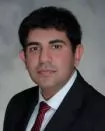Starbucks Corp. v. Ameranth, Inc.
Addressing patent eligibility for a covered business method (CBM) review under Section 18 of the America Invents Act (AIA), the Patent Trial and Appeal Board (PTAB, the Board) found the patents-at-issue to be eligible and instituted the CBM review. Starbucks Corp. v. Ameranth, Inc., Case Nos. CBM2015-00091, CBM2015-00099 (PTAB, Sept. 14, 2015) (White, APJ.).
Petitioner Starbucks requested CBM review of two Ameranth patents. The AIA defines a covered business method patent as "a method or corresponding apparatus for performing data processing or other operations used in the practice, administration, or management of a financial product or service." This definition was drafted to encompass patents "claiming activities that are financial in nature, incidental to a financial activity or complementary to a financial activity," excluding patents that claim "technological inventions."
The patents at issue here describe the use of a system in the context of online or mobile ordering and paying in restaurant and other "hospitality" contexts, including "reservations, frequent customer ticketing, wait list, etc." The system includes a central database, multiple handheld devices, a web server and a single point of entry for all hospitality applications, as well as an application programming interface (API) that enables third parties (e.g., point-of sale companies and internet content providers) to integrate fully with the computerized hospitality applications.
Starbucks argued that the claimed "orders" are part of the purchasing process and thus, a financial activity. The Board agreed with Starbucks and concluded that the representative claims of the patents-at-issue meet the financial-in-nature requirement of § 18(d)(1) of the AIA.
To determine whether a patent meets the technological invention exception (to CBM eligibility), the Board considers "whether the claimed subject matter as a whole recites a technological feature that is novel and unobvious over the prior art; and solves a technical problem using a technical solution." 37 C.F.R. § 42.301(b). As to this issue, Starbucks argued that the patents are not novel or nonobvious over the prior art and so they are not a technological invention. According to the specification, the software discussed by the patent owner may be written in any software language and is composed of steps that are commonly known, making it unnecessary to discuss the invention in any detail. The Board agreed with Starbucks that the patents merely contain a "recitation of known technologies" and do not qualify for technological invention exception.
Having found that the patents were eligible for CBM review, the Board proceeded to institute review § 324, finding it is more likely than not that at least one of the challenged claims is unpatentable as obvious.
Starbucks Brews Successful CBMs
The content of this article is intended to provide a general guide to the subject matter. Specialist advice should be sought about your specific circumstances.

